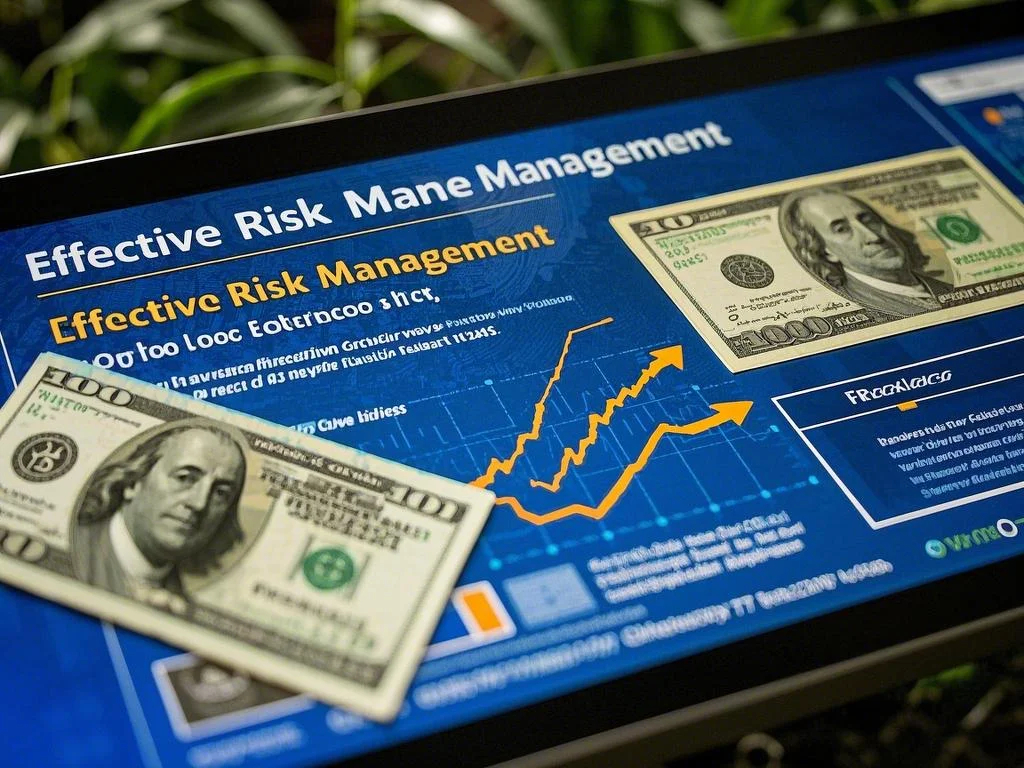Forex trading offers immense opportunities for profit, but it also comes with significant risks. The foreign exchange market is highly volatile, and even experienced traders can face substantial losses if they don’t manage risk effectively. For beginners and seasoned traders alike, understanding and implementing forex risk management strategies is crucial to long-term success. In this article, we’ll explore the key principles of risk management in forex trading, discuss practical strategies to protect your capital, and provide tips to help you navigate the complexities of currency trading.
Why Risk Management is Essential in Forex Trading
Risk management is the process of identifying, assessing, and mitigating potential losses in your trading activities. In forex trading, where market conditions can change rapidly, effective risk management is essential to protect your capital and ensure sustainable profitability. Without proper risk management, even a few losing trades can wipe out your account, leaving you unable to continue trading.
One of the key challenges in forex trading is the market’s inherent volatility. Currency prices can fluctuate dramatically in response to economic news, geopolitical events, and changes in market sentiment. While this volatility creates opportunities for profit, it also increases the risk of significant losses. By implementing sound risk management practices, you can minimize your exposure to these risks and improve your chances of long-term success.

Key Principles of Forex Risk Management
Effective risk management in forex trading is based on several key principles. Here are the most important ones to keep in mind:
Position Sizing
Position sizing refers to the amount of capital you allocate to each trade. It’s one of the most critical aspects of risk management, as it determines how much you stand to lose if a trade goes against you. A common rule of thumb is to risk no more than 1-2% of your trading capital on a single trade. This ensures that even a series of losing trades won’t significantly impact your account balance.
For example, if you have a $10,000 trading account, you should risk no more than $100-$200 per trade. This approach allows you to withstand multiple losses without depleting your capital, giving you the opportunity to recover and continue trading. Position sizing also helps you maintain discipline and avoid overtrading, which can lead to increased transaction costs and emotional burnout.
Stop-Loss Orders
A stop-loss order is a risk management tool that automatically closes a trade when the price reaches a predetermined level. It’s designed to limit your losses and protect your capital if the market moves against you. Stop-loss orders are essential for managing risk, as they prevent emotional decision-making and ensure that you stick to your trading plan.
When setting a stop-loss order, consider factors like the currency pair’s volatility, your risk tolerance, and your trading strategy. For example, if you’re trading a highly volatile pair like GBP/JPY, you might set a wider stop-loss to account for larger price swings. Conversely, if you’re trading a less volatile pair like EUR/USD, a tighter stop-loss might be appropriate. The key is to find a balance between protecting your capital and giving your trade enough room to breathe.
Diversification
Diversification is a risk management strategy that involves spreading your investments across different currency pairs and asset classes. By diversifying your portfolio, you can reduce your exposure to any single currency or market event. For example, instead of focusing solely on EUR/USD, you might also trade GBP/USD, USD/JPY, and AUD/USD. This approach helps mitigate the impact of a losing trade on your overall portfolio.
However, it’s important to note that diversification in forex trading is limited compared to other markets, as currency pairs are often correlated. For example, if the U.S. dollar (USD) strengthens, it may weaken multiple currency pairs simultaneously. To achieve true diversification, consider incorporating other asset classes, such as commodities, stocks, or cryptocurrencies, into your trading strategy.
Practical Risk Management Strategies
In addition to the key principles outlined above, here are some practical strategies to help you manage risk effectively in forex trading:
Use Leverage Wisely
Leverage allows you to control a larger position with a smaller amount of capital, amplifying both potential profits and losses. While leverage can be a powerful tool, it also increases your risk exposure. Many beginners make the mistake of using excessive leverage, which can lead to significant losses if the market moves against them.
To use leverage wisely, start with lower levels and gradually increase as you gain experience and confidence. Most brokers offer leverage ratios ranging from 10:1 to 500:1, but it’s important to choose a level that aligns with your risk tolerance and trading strategy. Remember, the higher the leverage, the greater the risk—so proceed with caution.
Monitor Economic Events
Economic news and events can have a significant impact on currency prices, leading to sudden and unpredictable market movements. To manage this risk, stay informed about upcoming events, such as interest rate decisions, employment reports, and GDP data, using an economic calendar. These tools provide valuable insights into potential market volatility and help you adjust your trading strategy accordingly.
For example, if the U.S. Federal Reserve is expected to announce an interest rate hike, you might reduce your position sizes or avoid trading USD pairs altogether until the news is released. By staying informed and proactive, you can minimize your exposure to event-driven risks and protect your capital.
Regularly Review Your Trades
Regularly reviewing your trades is an essential part of risk management. By analyzing your past trades, you can identify patterns, strengths, and weaknesses in your trading strategy. This allows you to make informed adjustments and improve your performance over time.
When reviewing your trades, consider factors like your win rate, average profit and loss, and risk-reward ratio. Are you consistently following your trading plan? Are there any recurring mistakes that you need to address? By answering these questions, you can refine your strategy and become a more disciplined and effective trader.
Final Thoughts
Effective forex risk management is the foundation of successful trading. By implementing sound strategies like position sizing, stop-loss orders, and diversification, you can protect your capital and navigate the market’s volatility with confidence. Whether you’re a beginner or an experienced trader, managing risk should always be a top priority.
Remember, forex trading is not about avoiding losses altogether—it’s about minimizing losses and maximizing profits over the long term. By staying informed about forex market forecasts and following forex trading tips, you can make informed decisions and achieve your financial goals. With the right approach, you can turn forex trading into a sustainable and rewarding endeavor.
